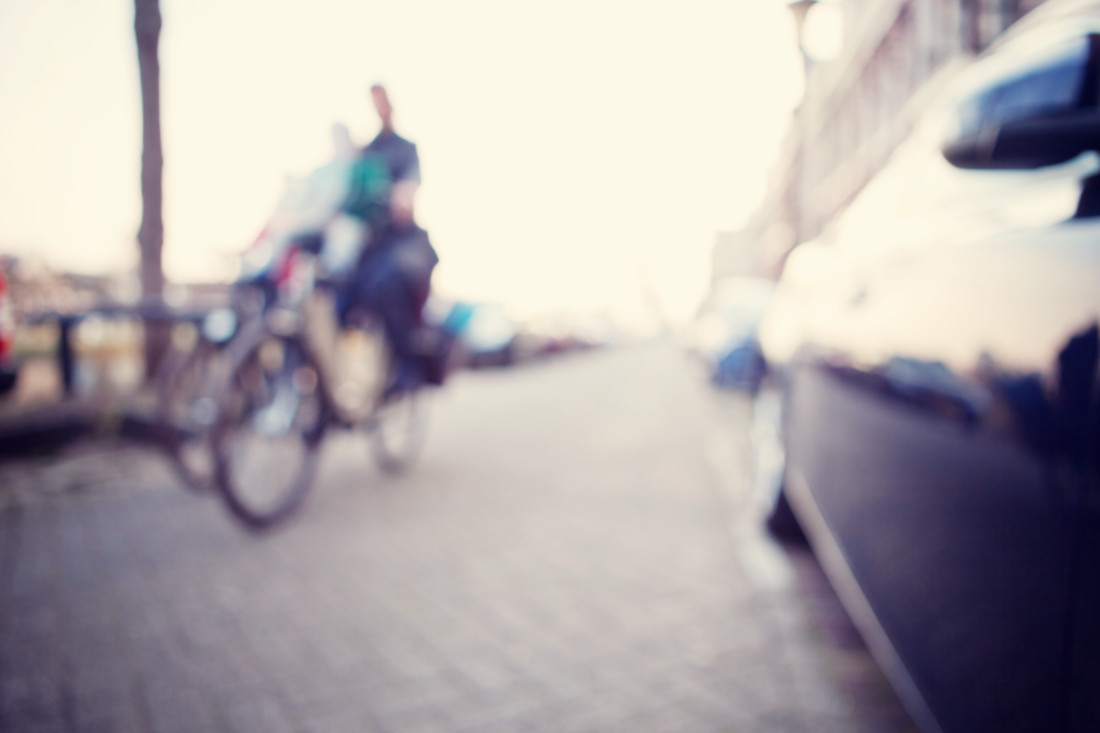Avoiding Philadelphia Pothole Accidents
 An Unexpected Consequence of This Winter’s Weather
An Unexpected Consequence of This Winter’s Weather
This year’s winter weather has brought us more than 22 inches of snow, sixty degree days, and potholes – holes in the pavement that vary in size and shape.
What do potholes have to do with winter?
Potholes occur when water in the ground below asphalt pavement freezes and then thaws. The resulting expansion and contraction of the soil weakens the asphalt and causes it to crack and deteriorate.
Potholes are usually most common in the spring. But, potholes can occur anytime that there is a lot of fluctuation between warm temperatures and cold temperatures. So, this year’s warm winter and harsh blizzards mean an early pothole season.
Potholes are Dangerous to Bicyclists
When you drive over a pothole, you cringe over the strain the pothole puts on your car’s suspension. If you are really unlucky, you may also end up with damage to your tires and wheels. But, if you are on a bike, a pothole can cause serious damage to both your bike and your person.
Avoiding Pothole Injuries
Fortunately, most Philadelphia pothole accidents can be avoided. The first step is to make sure you see the potholes. These tips can help:
- Scan up the road while riding your bike. Look for dark patches that may indicate potholes.
- If you ride in the dark, use a front light to illuminate the road.
- Pay attention while riding your bike. It’s easy to miss a pothole if you are daydreaming.
Bicylists know that potholes are dangerous, so they tend to brake or swerve in order to avoid potholes. Drivers should give you enough space to go around the pothole. You don’t need to give the hole a wide margin; missing it by a few inches is fine.
If you must ride into a pothole to avoid traffic, slowdown, relax, and gently lift yourself off your seat. This will reduce the weight on your bike, as it travels over the other side.
Make sure that you are wearing a helmet to protect your brain and that your tires are properly inflated. Underinflated tires are more likely to be punctured on the pothole’s sharp edge. A tire puncture can throw you from your bike.
Compensation for Philadelphia Pothole Accidents
Liability for Pennsylvania pothole accidents will depend on the circumstances of your accident and the severity of your injuries. Did a driver push you into the pothole as he tried to pass? Was the pothole hidden under leaves and debris? Was it a new pothole or one that had been reported several months ago? Was the bicyclists a child?
Philadelphia Bike Lawyers: Bicyclists Representing Bicyclists
If you’ve been injured in a Pennsylvania bicycle accident, Petrelli Law can help. Call us at 215-309-4034. Our attorneys will schedule a free consultation. We’ll listen to your story and tell you about your rights and your eligibility for compensation for your medical bills, property damage and more.


 Bicycling is the perfect way to enjoy fall foliage, but cooler temperatures and shorter days can affect your ride. Here are six tips to help you stay safe while biking this fall.
Bicycling is the perfect way to enjoy fall foliage, but cooler temperatures and shorter days can affect your ride. Here are six tips to help you stay safe while biking this fall.
 Before you became a parent, bicycling was a big part of your life. But, now it’s hard to squeeze in the time for a good bicycle ride. Fortunately, you have options.
Before you became a parent, bicycling was a big part of your life. But, now it’s hard to squeeze in the time for a good bicycle ride. Fortunately, you have options.
 In Pennsylvania, children age 12 and under must wear a helmet when riding a bike. Adult are not required to wear a helmet, but wearing a helmet is a good idea for any bicyclist. Head injury is the leading cause of bicycle accident death in Pennsylvania. A helmet can reduce the risk of head injury by 85 percent.
In Pennsylvania, children age 12 and under must wear a helmet when riding a bike. Adult are not required to wear a helmet, but wearing a helmet is a good idea for any bicyclist. Head injury is the leading cause of bicycle accident death in Pennsylvania. A helmet can reduce the risk of head injury by 85 percent.
 Do you remember your first bike? What about the day your training wheels came off? Or, your first long ride? Riding a bike is an important part of an American childhood. You want your child to have those memories, but you know that bikes can also be dangerous.
Do you remember your first bike? What about the day your training wheels came off? Or, your first long ride? Riding a bike is an important part of an American childhood. You want your child to have those memories, but you know that bikes can also be dangerous.


